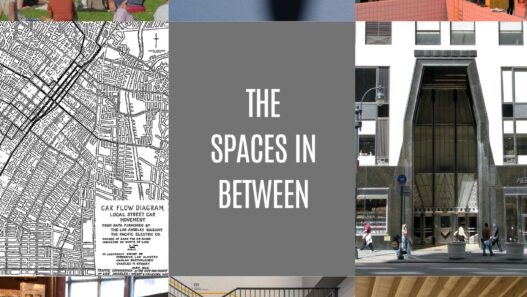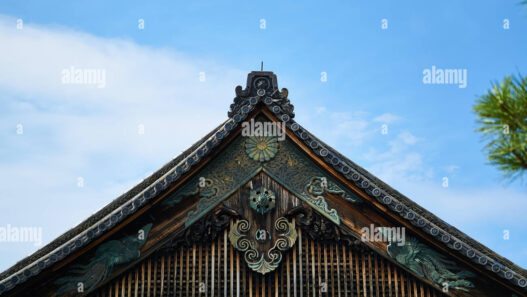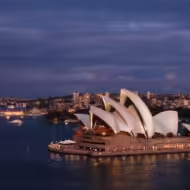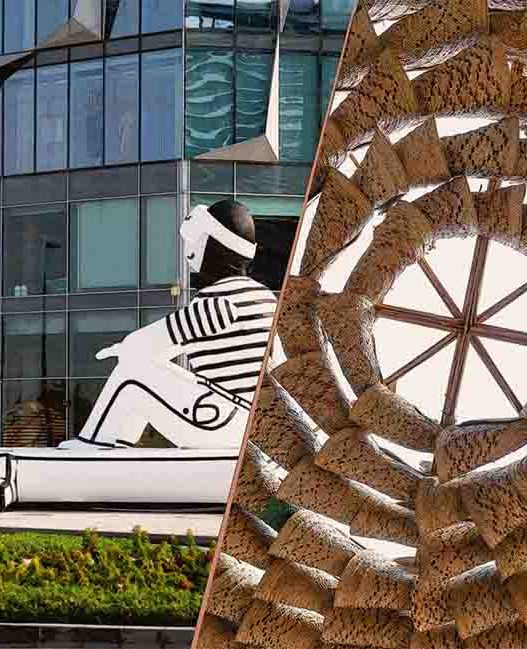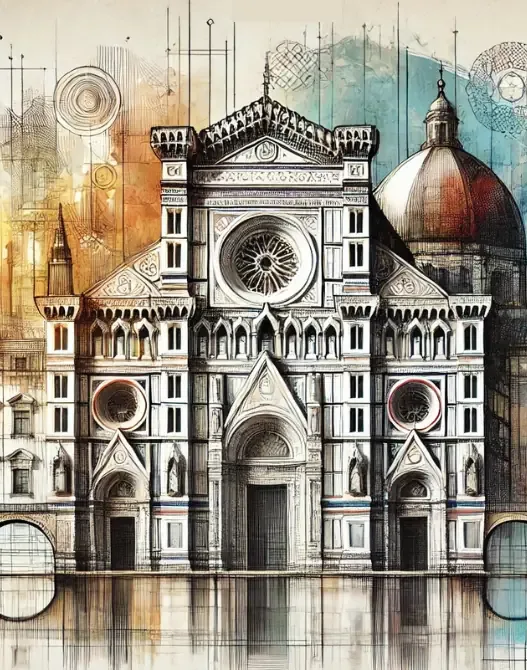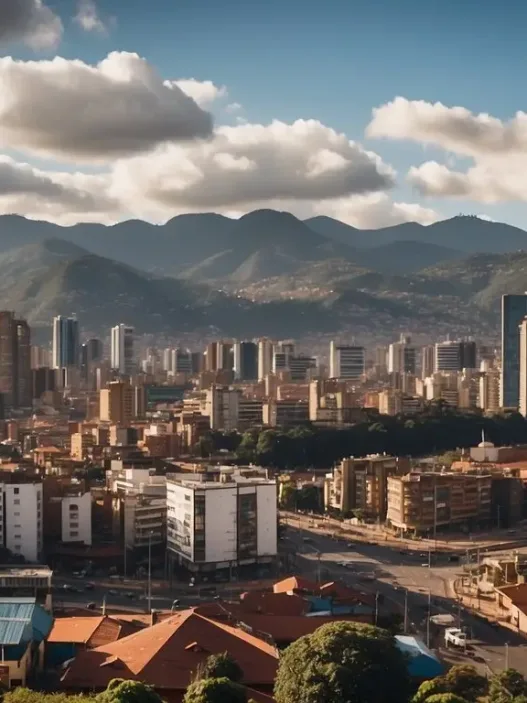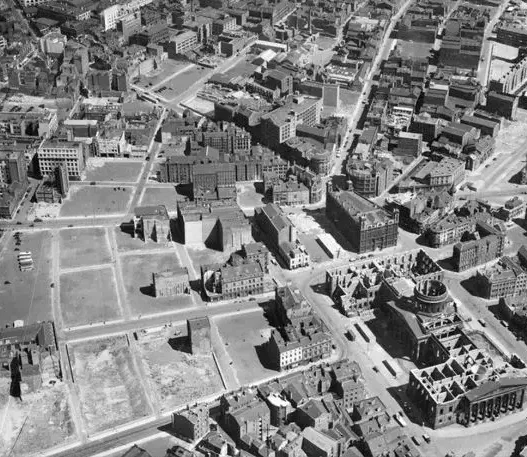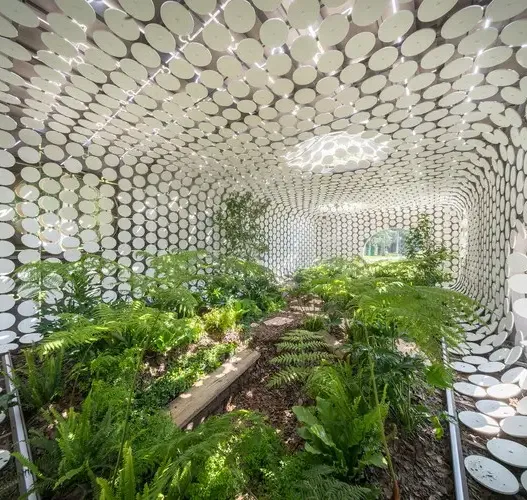Rio de Janeiro is a city that captures the imagination with its stunning blend of urban design and breathtaking natural beauty. Nestled between mountains and the Atlantic Ocean, Rio’s architecture reflects its vibrant culture, rich history and the unique challenges of its geographical setting. The city’s buildings and public spaces tell stories of innovation, resilience and the interplay between nature and human creativity. This exploration of Rio’s architectural landscape reveals how these elements come together to form a distinctive urban identity.

Overview of Rio’s Urban Design
Rio de Janeiro’s urban design is a fascinating tapestry woven from a variety of elements. The layout of the city is shaped by its topography, with hills, beaches and valleys influencing where and how structures are built. Iconic neighborhoods like Copacabana and Ipanema showcase high-rise buildings overlooking the ocean, while hilly areas like Santa Teresa feature charming colonial houses offering panoramic views. The design of public spaces, such as the famous Cinelândia square, emphasizes social interaction, inviting locals and tourists alike to enjoy the vibrant street life. This integration of landscape and architecture creates a dynamic urban environment that celebrates both the built and natural world.
Historical Context of Architecture in Rio
To understand Rio’s architectural landscape, it is necessary to delve into its history. The city was founded by the Portuguese and its colonial architecture reflects European influences fused with indigenous and African elements. The Baroque period gave rise to grand churches and palaces, while the 19th century ushered in neoclassicism, seen in the opulent Teatro Municipal. The 20th century marked a turning point with the introduction of modernist principles, led by architects such as Oscar Niemeyer, whose innovative designs challenged traditional notions of form and function. This historical evolution reveals how Rio’s architecture has constantly adapted to cultural changes and technological advances, making it a living testament to the city’s rich heritage.
Influence of Natural Landscapes
Rio de Janeiro’s natural landscapes play an important role in shaping its architecture. The city’s stunning topography, characterized by mountains, beaches and lush forests, not only provides a breathtaking backdrop, but also influences architectural choices. Buildings are often designed to maximize the surrounding landscape, with large windows and open spaces inviting the outdoors in. For example, the famous Sugarloaf Mountain and the Christ the Redeemer statue are not just landmarks; they are an integral part of the city’s identity and inspire architects to create structures in harmony with the landscape. This relationship between architecture and nature fosters a sense of place and connection that makes Rio a unique urban environment.
Important Architectural Trends in Rio
Throughout its history, Rio de Janeiro has experienced various architectural movements that have left an indelible mark on the city’s skyline. The Modernist movement, especially in the mid-20th century, produced bold, innovative designs that emphasized clean lines and functional forms. Oscar Niemeyer’s National Congress and the Niterói Museum of Contemporary Art exemplify this era, showcasing curves and organic shapes that challenge traditional design. Meanwhile, the revival of traditional elements in recent years reflects a growing appreciation for the city’s cultural roots, blending old and new in a harmonious dialogue. Each movement contributes to Rio’s rich architectural fabric, emphasizing its evolution and resilience.
The Importance of Architecture in Cultural Identity
Architecture in Rio de Janeiro is not just about buildings; it is a reflection of the city’s cultural identity. The diversity of architectural styles reflects the melting pot of influences that define Rio, from colonial heritage to modernist innovation. Public spaces such as the Selarón Stairs serve not only as artistic expressions, but also as social gathering places that foster a sense of belonging among the city’s residents. Moreover, architecture plays an important role in articulating social narratives and addressing issues of inequality and social development. As Rio continues to grow and change, its architecture remains a vital part of the city’s story, embodying the hopes, dreams and struggles of its people. With its bold urban design, Rio de Janeiro stands as a testament to the enduring relationship between architecture, culture and the natural world.
Rio de Janeiro is a city where the vibrancy of urban life is seamlessly intertwined with breathtaking natural beauty. Soaring mountains, lush forests and stunning beaches form the backdrop to a rich tapestry of architectural wonders. This dynamic interplay between nature and architecture creates a unique landscape that mesmerizes residents and visitors alike. The city’s structural innovations reflect its cultural heritage, its historical evolution and the creative spirit of its people. In this exploration, we look at some of Rio’s most iconic architectural masterpieces, each telling a story of faith, modernity, art and futurism.
Iconic Architectural Masterpieces
Jesus the Savior A Symbol of Faith
Standing majestically atop Mount Corcovado, Christ the Redeemer is perhaps Brazil’s most recognizable symbol. This colossal statue of Jesus Christ is not only an architectural achievement, but also a profound representation of faith and hope. Completed in 1931, it was designed by French sculptor Paul Landowski and built by Brazilian engineer Heitor da Silva Costa.
The statue’s wide arms embrace the city below, inviting locals and tourists alike to experience a sense of unity and peace. Made of reinforced concrete and soapstone, the sculpture’s design reflects a mix of Art Deco and Brazilian influences. The panoramic view from the mountain offers a breathtaking vista of Rio’s stunning coastline and vibrant urban landscape, making it a place of pilgrimage for millions of people each year. Christ the Redeemer represents the soul of Rio and symbolizes both the city’s religious commitment and its cultural heritage.
Oscar Niemeyer’s Modernist Influence
A pioneering architect, Oscar Niemeyer has left an indelible mark on the architectural landscape of Rio de Janeiro. His work is characterized by sweeping curves and bold forms that seamlessly integrate buildings with their surroundings. Niemeyer’s most important contributions include the Niterói Museum of Contemporary Art and several buildings in Brasília, but his influence is also deeply felt in Rio.
Niemeyer’s designs challenge traditional architectural norms and embrace the fluidity of space and light. His ability to create structures that evoke emotion while serving functional purposes positions him as a key figure in modern architecture. The Cathedral of St. Sebastian, with its unique hyperboloid structure, stands as a testament to his innovative approach. The cathedral’s striking design, with stained glass that filters light in vibrant hues, creates a spiritual atmosphere that complements its role as a place of worship.
Selarón Stairs: A Living Mosaic
The Selarón Staircase, or Escadaria Selarón, represents a colorful fusion of art and architecture. Created by Chilean-born artist Jorge Selarón, this staircase is decorated with brightly colored tiles collected from various countries. Connecting the neighborhoods of Santa Teresa and Lapa, the steps invite passersby to explore the vibrant hues and intricate patterns.
Selarón’s work transcends traditional architectural boundaries, transforming a simple staircase into a living canvas that tells a story of cultural diversity and community spirit. Each tile has its own history, reflecting the artist’s passion for bringing people together through art. The steps have become a beloved icon, attracting visitors who admire the creative expression and sense of connection within the city.
Museum of Tomorrow Futuristic Design
The Museum of Tomorrow, or Museu do Amanhã, is a striking example of contemporary architecture that embodies the spirit of innovation. Designed by Spanish architect Santiago Calatrava and opened in 2015, the museum focuses on the themes of sustainability and the future of humanity. Its design resembles a giant, futuristic white building that evokes both organic forms and technological progress.
The museum’s interactive exhibitions engage visitors in discussions on climate change, biodiversity and urbanization, encouraging them to reflect on their role in shaping a sustainable future. Set against the backdrop of Guanabara Bay, the building’s design exemplifies the connection between architecture, science and the environment, harmonizing with its natural surroundings. The Museum of Tomorrow serves not only as a cultural institution, but also as a beacon of hope for future generations.
Copan Building: A Curvilinear Miracle
Designed by Oscar Niemeyer, the Copan Building is an iconic structure that redefined the skyline of Rio de Janeiro. Completed in 1966, the building stands as a testament to modernist architecture with its fluid, wave-like form. The building’s distinctive design includes more than a thousand apartments arranged in its curvilinear embrace to create a sense of community.
Niemeyer’s vision for the Copan Building was to create a place where people can live harmoniously, with spaces that encourage social interaction. The building’s exterior reflects Rio’s natural landscape with its undulating lines, while its interiors are flooded with light, promoting a sense of openness. The Copan Building has become a symbol of urban life in Rio, representing the balance between modernity and the city’s vibrant culture.
Rio de Janeiro’s architectural masterpieces represent the essence of a city that thrives on creativity, diversity and resilience. Each building tells a story, invites exploration and reflection, and together they form a landscape as dynamic as the people who inhabit it. From the spiritual embrace of Christ the Redeemer to the colorful expression of the Selarón Stairs, the city’s architecture is a celebration of life, culture and the natural world.
Integration of Nature and Architecture
In the vibrant city of Rio de Janeiro, the interaction between urban architecture and the stunning natural landscape is a defining feature. This integration not only enhances the aesthetic appeal of the city, but also plays an important role in the overall quality of life of its residents. Rio’s urban planners and architects have created spaces that harmonize human activity with the environment by embracing nature, from lush mountains to inviting beaches. This chapter examines how nature and architecture come together in Rio, highlighting key concepts, real-world applications and a vision for a sustainable urban future.
Landscape Architecture in Urban Planning
Landscape architecture in Rio de Janeiro is a vital aspect of urban planning that shapes the city’s identity. This discipline focuses on designing open spaces that enhance the relationship between people and their environment. In Rio, this is particularly important due to the city’s unique topography, which includes mountains, forests and coastal areas. Landscape architects work to create public spaces that invite interaction, such as plazas, gardens and pathways that encourage walking and socializing.
A notable example is the revitalization of the Porto Maravilha district, where former industrial areas have been transformed into vibrant public spaces. The project includes green roofs, urban gardens and waterfront promenades that not only beautify the area but also improve air quality and promote biodiversity. This careful integration of landscape architecture makes nature an integral part of the urban experience, making the city more livable and enjoyable.
Parks and Green Spaces in the City
Rio de Janeiro is famous for its lush parks and green spaces that provide an important breathing space in a crowded urban environment. These spaces act as lungs for the city, offering residents a respite from the concrete landscape. Parks such as Parque Lage and the iconic Tijuca National Park are not only recreational spaces, but also vital ecosystems that support diverse flora and fauna.
The city’s commitment to preserving and expanding green spaces is evident in initiatives such as the “Green Belt” project, which aims to connect existing parks and natural areas with a network of green corridors. These corridors not only increase access to nature, but also promote ecological health by enabling the movement of wildlife. The importance of parks extends beyond aesthetics; they contribute to mental well-being, encourage physical activity and strengthen community engagement. In Rio, these green oases are cherished by locals and visitors alike, reinforcing the idea that nature and urban life can coexist harmoniously.
The Role of Beaches in Urban Design
The beaches in Rio de Janeiro are more than recreational spaces; they are central to the city’s identity and urban design. Famous beaches such as Copacabana and Ipanema are an integral part of the city’s social fabric and attract millions of visitors every year. These sandy beaches have been carefully designed to accommodate both recreational and social activities, with promenades lined with cafes, sports facilities and art installations that invite interaction.
Urban planners have recognized the importance of these coastal areas and integrated them into the wider urban landscape. Sustainable beach management strategies include erosion control, water quality monitoring and protection of coastal ecosystems. Beaches not only enhance the beauty of the city, but also serve as vital spaces for cultural events and social gatherings, strengthening the bond between the community and its natural environment.
Environmental Sustainability in Architecture
In recent years, Rio de Janeiro has placed a strong emphasis on environmental sustainability in architecture. This approach aims to minimize the ecological footprint of buildings while maximizing their functionality and aesthetic appeal. Architects are increasingly incorporating sustainable practices such as using local materials, integrating renewable energy sources and implementing green roofs and walls.
One prominent example is the Museum of Tomorrow, designed by renowned architect Santiago Calatrava. This innovative building is not only futuristic in design, but also incorporates sustainable technologies such as solar panels and rainwater harvesting systems. It serves as a symbol of the city’s commitment to a sustainable future, educating visitors about environmental issues and the importance of conserving natural resources. Through such initiatives, Rio is positioning itself as a leader in sustainable urban development and demonstrating how architecture can contribute to a healthier planet.
Case Studies on Nature-Integrated Buildings
Many buildings in Rio de Janeiro exemplify the successful integration of nature and architecture. One prominent example is Casa das Canoas, designed by Oscar Niemeyer, which blends seamlessly with its natural surroundings. The house features large glass walls that offer breathtaking views of the lush landscape and allow nature to become part of the living space.
Another inspiring project is Parque das Ruínas, a cultural center that transforms the ruins of an old mansion into a vibrant public space. The design preserves historic elements while introducing modern features such as gardens and performance spaces, creating a unique venue for cultural events. These case studies highlight how architecture can honor the past, celebrate the present and embrace the future, all while maintaining a strong connection with the natural world.
In conclusion, the integration of nature and architecture in Rio de Janeiro is a dynamic and evolving process that reflects the city’s unique character. By prioritizing green spaces, sustainable practices and thoughtful design of urban areas, Rio continues to inspire a harmonious relationship between urban life and the natural environment. This commitment not only enhances the beauty of the city, but also enriches the lives of its inhabitants, making Rio a model for urban living in the middle of nature.
Cultural Influences on Architectural Styles
A vibrant city known for its breathtaking landscapes, Rio de Janeiro is equally famous for its rich tapestry of architectural styles. The city’s architecture is not just a backdrop to its culture; it is a living expression of the diverse influences that have shaped its identity over the centuries. These influences stem from the colonial past, the spirit of Afro-Brazilian culture, the traditions of indigenous peoples, and the dynamic interplay between modern and historical styles. Each of these elements plays a crucial role in creating the architectural narrative that defines Rio today.
Colonial Heritage and Influence
Rio de Janeiro’s architectural landscape owes a significant debt to its colonial heritage. Founded by the Portuguese in the 16th century, the city was designed with European sensibilities that fused with the local environment. Colonial architecture often incorporated baroque and neoclassical elements, characterized by grand facades, intricate details and ornate decorations. Important buildings such as the São Bento Convent and the National Library exemplify this style, showcasing the craftsmanship and aesthetics of the period.
As the city grew, so did the influence of colonial architecture. The layout of neighborhoods such as Santa Teresa reveals how colonial designs prioritized communal spaces and religious buildings that reflected the social dynamics of the time. This colonial legacy laid the foundation for modern urban planning in Rio and emphasized the importance of public spaces, which remain a feature of the city’s charm.
Afro-Brazilian Architecture and Art
Afro-Brazilian culture has also profoundly influenced Rio’s architectural landscape. The legacy of enslaved Africans brought to Brazil during the transatlantic slave trade is evident in many aspects of the city’s architecture. The colorful, vibrant houses in neighborhoods like Santa Teresa and the iconic Our Lady of the Rosary Church of the Black Men reflect this influence. These structures often feature bold designs and intricate tile work that combine functionality with artistic expression.
Moreover, the cultural heritage of African societies is celebrated through festivals, music and art, and these celebrations are often reflected in architectural expressions. Buildings such as the Museum of Tomorrow incorporate elements that celebrate Afro-Brazilian culture and emphasize sustainability and community engagement. This infusion of African heritage not only enriches the architectural dialogue in Rio, but also serves as a reminder of the city’s complex social fabric.
Indigenous Influences in Urban Design
Brazil’s indigenous peoples, with their deep connection to the land, have left an indelible mark on Rio’s urban design. While much of their architectural influence has been overshadowed by colonial and modern developments, elements of indigenous wisdom remain in the city’s layout and public spaces. The use of natural materials and the integration of green spaces reflect the indigenous understanding of harmony with nature.
For example, the design of parks and plazas in Rio often incorporates indigenous concepts of communal living and respect for the environment. The famous Tijuca National Park, an urban rainforest, exemplifies this philosophy by showing how urban areas can coexist with nature. The park serves as a reminder of local values such as sustainability and community, encouraging a dialog between past and present.
Fusion of Modern and Traditional Styles
In recent years, Rio has witnessed an exciting fusion of modern and traditional architectural styles. This mix is particularly evident in developments that prioritize innovation while respecting the historical context. Architects are increasingly drawing inspiration from the city’s diverse past, creating structures that celebrate both tradition and modernity.
The Museu do Amanhã (Museum of Tomorrow) is a prime example of this architectural dialog. Designed by Santiago Calatrava, the museum features a futuristic design that seamlessly integrates with its seaside location while respecting the surrounding landscape. This approach is not just about aesthetics; it embodies a commitment to sustainability and community interaction, bridging past and future.
Festivals and their architectural significance
Festivals such as Carnival in Rio de Janeiro further emphasize the architectural significance of the city. These celebrations transform urban spaces into living stages, showcasing the interplay between architecture and cultural expression. The Sambadrome, designed by Oscar Niemeyer, is a striking example of how architecture can enhance social experiences. Its design allows thousands of spectators to participate in the spectacle of samba parades, underscoring the role of public spaces in fostering community and cultural identity.
The architectural design of these spaces is not only functional; it reflects the spirit of the people. The colorful floats, costumes and rhythms of Carnival intertwine with the structures that support them, creating a unique blend of art and architecture that captivates locals and visitors alike. Through these festivals, Rio’s architectural landscape becomes a canvas for cultural celebrations and reinforces the city’s dynamic identity.
Ultimately, Rio de Janeiro’s architectural styles are a testament to the city’s rich cultural influences. From colonial roots and Afro-Brazilian art to indigenous wisdom and modern innovation, each element contributes to a vibrant and evolving narrative. Understanding these influences not only enhances our appreciation of Rio’s architecture, but also deepens our connection to the city’s diverse cultural heritage.
Challenges for Urban Architecture in Rio
Rio de Janeiro is a city famous for its stunning natural beauty, characterized by dramatic mountains, beautiful beaches and vibrant culture. However, this picturesque setting brings with it numerous challenges that urban architects and planners must address. It highlights the complex interplay between human design and nature as the city grapples with rapid urbanization, conservation issues, socioeconomic inequalities, climate change and the quest for sustainable development.
Urbanization and Overpopulation Problems
Urbanization in Rio de Janeiro has increased rapidly, leading to significant overpopulation in several neighborhoods. With a population of over six million, the city is experiencing a constant influx of people seeking opportunities, education and a better quality of life. This rapid growth is straining existing infrastructure, leading to congestion and inadequate public services. Architects face the daunting task of designing spaces to accommodate this growing population while maintaining functionality and livability.
The challenge is not only to increase density, but also to ensure that new developments are compatible with the city’s unique topography. As neighborhoods become more crowded, architects must creatively use vertical space, constructing tall buildings that offer residential, commercial and recreational spaces. Such designs aim to reduce the urban footprint while providing residents with basic amenities within walking distance. However, the challenge of preserving the character and cultural heritage of Rio’s diverse communities amidst this urban expansion remains.
Preservation of Historic Buildings
Rio de Janeiro has a rich architectural heritage with buildings dating back to colonial times. The city is home to numerous historic landmarks, including the ornate Theatro Municipal and the iconic Selarón Stairs. Preserving these buildings while meeting modern needs is a significant challenge for city planners.
Architects and preservationists must find a balance between conservation and innovation, often using adaptive reuse strategies. For example, transforming historic warehouses into stylish lofts or cultural centers helps preserve the essence of the past while integrating contemporary design. Such projects not only honor the city’s history, but also contribute to economic revitalization, attract tourism and foster community pride. However, navigating the regulatory frameworks that protect these spaces can be complex and requires collaboration between government agencies, local communities and design professionals.
Socioeconomic Inequalities in Urban Areas
Socioeconomic inequalities are evident in Rio de Janeiro, where affluent neighborhoods contrast sharply with sprawling favelas. This divide poses significant challenges for urban architecture as it emphasizes the need for inclusive design that addresses all socioeconomic groups.
Architects and planners increasingly recognize the importance of community participation in the design process and seek their input to create spaces that reflect the needs and aspirations of residents. Projects aimed at improving infrastructure in favelas, such as sanitation and better access to transportation, are crucial. Initiatives such as community centers and public parks not only improve quality of life, but also promote social cohesion. By addressing these inequalities, architects can contribute to a more equitable urban landscape and help bridge the gap between different communities.
Climate Change and its Impacts
Climate change poses a significant threat to urban architecture in Rio de Janeiro, especially given the city’s coastal location and vulnerability to extreme weather events. Rising sea levels and increased rainfall lead to flooding that can damage infrastructure and displace communities.
In response, architects are exploring flexible design strategies that incorporate sustainable practices. Green roofs, permeable pavements and natural drainage systems are increasingly being integrated into new developments. In addition, community education on climate resilience is vital, informing residents on how to adapt to changing environmental conditions. By prioritizing sustainability, architects can help ensure that Rio’s urban landscape remains vibrant and livable for future generations.
Future Prospects for Sustainable Development
Looking ahead, the prospects for sustainable development in Rio de Janeiro depend on a collaborative approach involving government, the private sector and local communities. The city’s unique challenges present opportunities for innovative architectural solutions that prioritize sustainability and inclusivity.
Initiatives such as urban gardening, renewable energy projects and environmentally friendly public transportation systems are gaining traction. The potential to create green spaces that not only increase biodiversity but also improve the quality of life of urban residents is high. Moreover, integrating technology into urban planning can streamline processes and improve the efficiency of public services.
As architects and planners face these challenges, they have a unique opportunity to reimagine Rio de Janeiro’s urban landscape. By adopting a forward-thinking mindset that prioritizes community needs and environmental stewardship, they can contribute to a city that celebrates its rich heritage while adapting to the demands of the future. The journey towards a sustainable and equitable urban environment in Rio continues, and the possibilities are as vast as the city’s breathtaking landscapes.
The Future of Rio’s Architectural Identity
Looking at Rio de Janeiro’s vibrant skyline, it’s hard not to marvel at the marriage of bold urban architecture with the breathtaking natural landscapes that surround it. Known for iconic landmarks such as Christ the Redeemer and Sugarloaf Mountain, the city has continually evolved, reflecting both its rich cultural heritage and the aspirations of its people. The future of Rio’s architectural identity stands at a fascinating crossroads where innovation meets tradition and community engagement shapes the urban narrative.
Reflections on Architectural Achievements
Rio de Janeiro’s architectural journey is marked by countless achievements that showcase the creativity and resilience of its designers and builders. From Oscar Niemeyer’s modernist works exemplified in structures such as the Niterói Museum of Contemporary Art to the vibrant favelas that tell stories of community and resourcefulness, the city’s architecture is a tapestry of human expression. These achievements not only serve aesthetic purposes, but also embody the spirit and history of the city. As we reflect on these achievements, it becomes clear that they provide a strong foundation for future developments and invite new architects to draw inspiration from both past innovations and cultural narratives.
The Role of Society in Urban Development
The role of the community in shaping urban development in Rio cannot be underestimated. Residents of various neighborhoods are increasingly involved in discussions about their living environment, advocating for designs that reflect their needs and aspirations. This grassroots engagement has resulted in initiatives that prioritize inclusive spaces where public spaces are accessible and cater to diverse populations. Community-driven projects redefine traditional notions of architecture, emphasizing collaboration and collective identity. By engaging local voices in the planning process, Rio creates urban spaces that deeply resonate with residents and foster a sense of belonging and pride.
Innovations in Future Projects
Looking ahead, Rio’s architectural future promises to be vibrant and innovative. Architects are now exploring sustainable design principles that prioritize environmental stewardship while enhancing urban livability. Projects integrating green roofs, renewable energy sources and environmentally friendly materials are becoming increasingly common. Technology also plays an important role in shaping the city’s architectural landscape. Smart city initiatives aim to leverage data and connectivity to improve city governance and enhance the quality of life for residents. These innovations mark a shift towards a more responsive and responsible approach to urban development, ensuring that future projects not only meet the demands of modern life but also contribute positively to the environment.
Maintaining the Balance between Nature and Urban Growth
One of the most pressing challenges facing Rio is the need to balance urban growth with its stunning natural landscapes. The city’s geography, characterized by mountains, beaches and lush forests, is both a blessing and a challenge. As urbanization continues, awareness of the importance of protecting these natural areas is growing. Architects and planners are increasingly prioritizing designs that integrate nature into the urban fabric, creating parks, green corridors and public spaces that invite residents to connect with their surroundings. This harmonious relationship between nature and the city is essential to promote prosperity and ensure that the beauty of Rio’s landscape is cherished for future generations.
Final Thoughts on Rio’s Architectural Heritage
As we complete our research into Rio de Janeiro’s architectural identity, we see that the city stands at a unique crossroads. Its rich architectural heritage serves as both a source of inspiration and a platform for future innovation. The interplay between community engagement, sustainable practices and the preservation of natural beauty will undoubtedly shape the next chapter of Rio’s urban narrative. As architects continue to push boundaries while honoring the city’s past, Rio de Janeiro is poised to emerge as a beacon of bold, creative and inclusive urban architecture. Through this journey, the city is not only celebrating its architectural achievements, but also embracing the promise of a future where the built environment and nature coexist in harmony.
Discover more from Dök Architecture
Subscribe to get the latest posts sent to your email.



